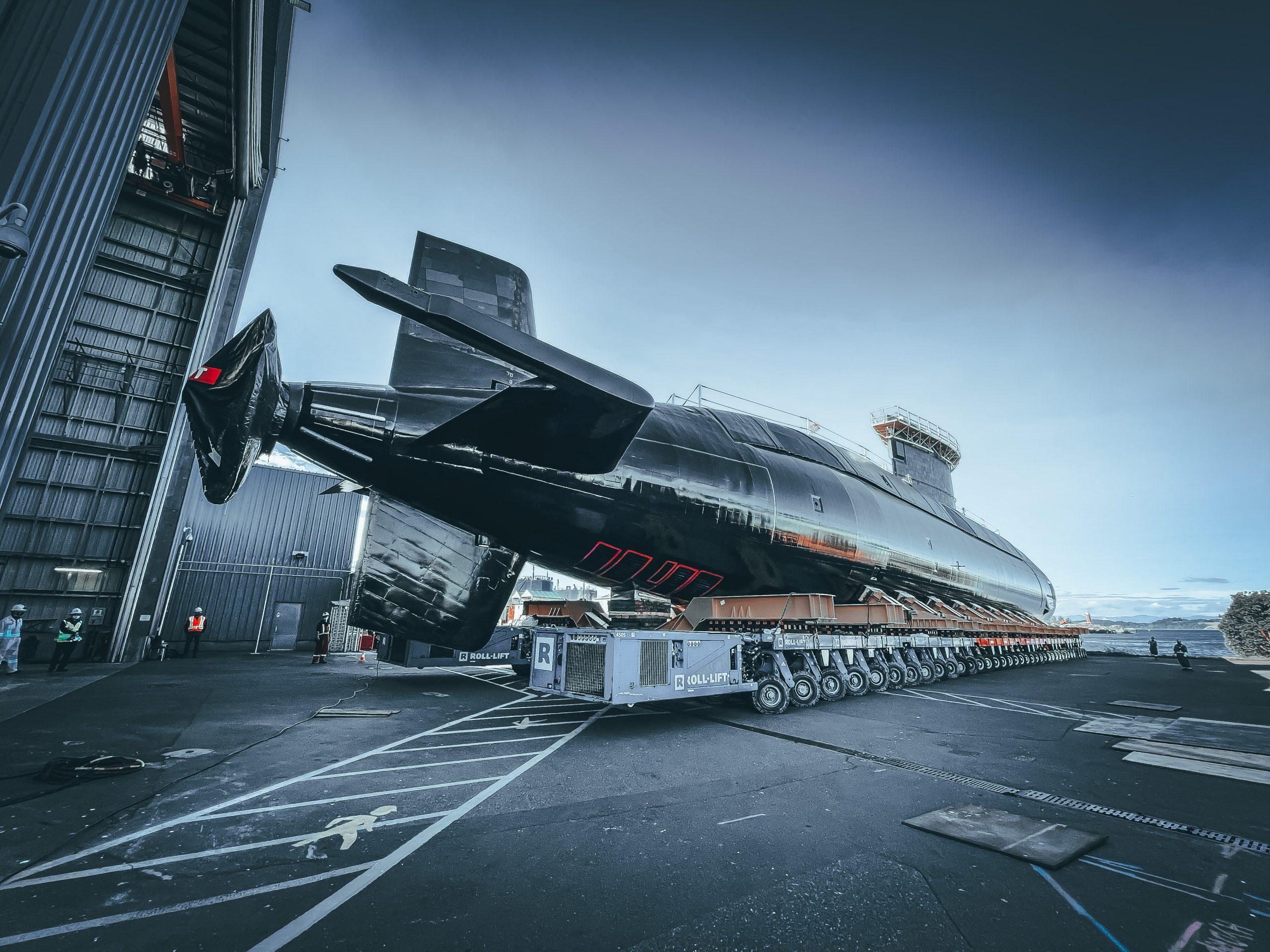
Canada’s most modern submarine returns to the water
By RCN PA
When Her Majesty’s Canadian Submarine (HMCS) Corner Brook began its undocking on June 13, it became the most modern submarine in the Royal Canadian Navy (RCN).
This undocking marked the return of Corner Brook to Vancouver Island waters for the first time in almost a decade. It is also the first in a series of milestones required for returning the submarine to operational service alongside HMC Submarines Victoria and Windsor.
Corner Brook was in an Extended Docking Work Period (EDWP) since 2015 in Esquimalt. Repairs included damage caused by a grounding in 2011 along with other more intrusive maintenance routines that can only be conducted in a long maintenance period in dry dock.
The EDWP also included several notable upgrades such as a new communication mast called the Universal Modular Mast, which allows high-speed, highly-secure, jam-resistant satellite communications with shore. It also received the BQQ-10 sonar suite. The difference between the BQQ-10 and the previous 2040 sonar suite range from a significant increase in the amount of processing that occurs after data is received from a Victoria-class submarine sonar systems to how that information is displayed to the operators.
Corner Brook is now able to fire the Mk48 7AT torpedoes, a significant upgrade to the current weapon, the Mk 48 4M.
In addition to these upgrades, and separate from the work conducted on Corner Brook during this period, is the Victoria-class Modernization (VCM) effort, which aims to ensure the submarines remain operationally relevant until the mid-to-late 2030s. This series of projects, as part of VCM, will provide improved habitability and deployment conditions for submariners and enhanced capabilities to support continued contributions to Canadian Armed Forces joint operations as well as improving survivability against current and evolving threats in an increasingly complex and changing battle space.
The Royal Canadian Navy’s four Victoria-class submarines – Victoria, Corner Brook, Chicoutimi and Windsor – are some of the most strategic assets within the Canadian Armed Forces. The wide-reaching capabilities provided by the submarines are critical for supporting sovereignty and continental defence operations, and ensuring the navy has the necessary fleet mix and capacity to support operations at home and abroad.
Despite their age, the strategic impact of those modernized submarines is impressive.
“The Victoria-class submarine is still a very combat-capable platform,” says Captain (Navy) (Capt(N)) Jean Stéphane Ouellet, Commander Canadian Submarine Force. “With the current and planned upgrades to the boats and a highly trained crew, I would take that platform into battle anytime.”
Canada’s submarines are highly effective weapons of strategic deterrence. These modernized vessels are a critical platform in the RCN fleet, which allow Canada to increase its presence and influence abroad and contribute to maritime security and stability, alone or in cooperation with our allies.
In addition, Capt(N) Ouellet says the modernized submarines, which possess formidable surveillance and intelligence gathering capabilities, allow Canada the capacity to defend North American waters and maritime approaches, and control or deny access to a substantial ocean or littoral area.
“Submarines enjoy an unparalleled freedom of action and independence,” he says. “As a result of their unrivalled stealth, persistence, and lethality, the mere possibility that a submarine is operating undetected can alter the entire nature of the theater of operations. If required, that lethality can contribute decisively to combat operations”
Submarines are some of the most complex pieces of machinery in the world and operate in environments where they experience tremendous pressure from operations at depth, extreme weather conditions, and the corrosive effects of seawater. These environments require a strict in-service maintenance schedule to ensure the safety of the crew and mission success.
Under the current maintenance model, one of Canada’s four submarine is always in a deep maintenance period known as an Extended Docking Work Period. These long, multi-year work periods ensure the submarines remain safe, functional and operationally capable.
Following HMCS Corner Brook’s undocking, the alongside, in-water testing portion of the EDWP will start, culminating in a camber dive, which is a static dive alongside to prove systems in a dived configuration. It is anticipated the camber dive and sea acceptance trials will begin in the latter part of 2021, with a return to full service in 2022. Eventually, Corner Brook will be transferred to the East Coast fleet based in Halifax.






